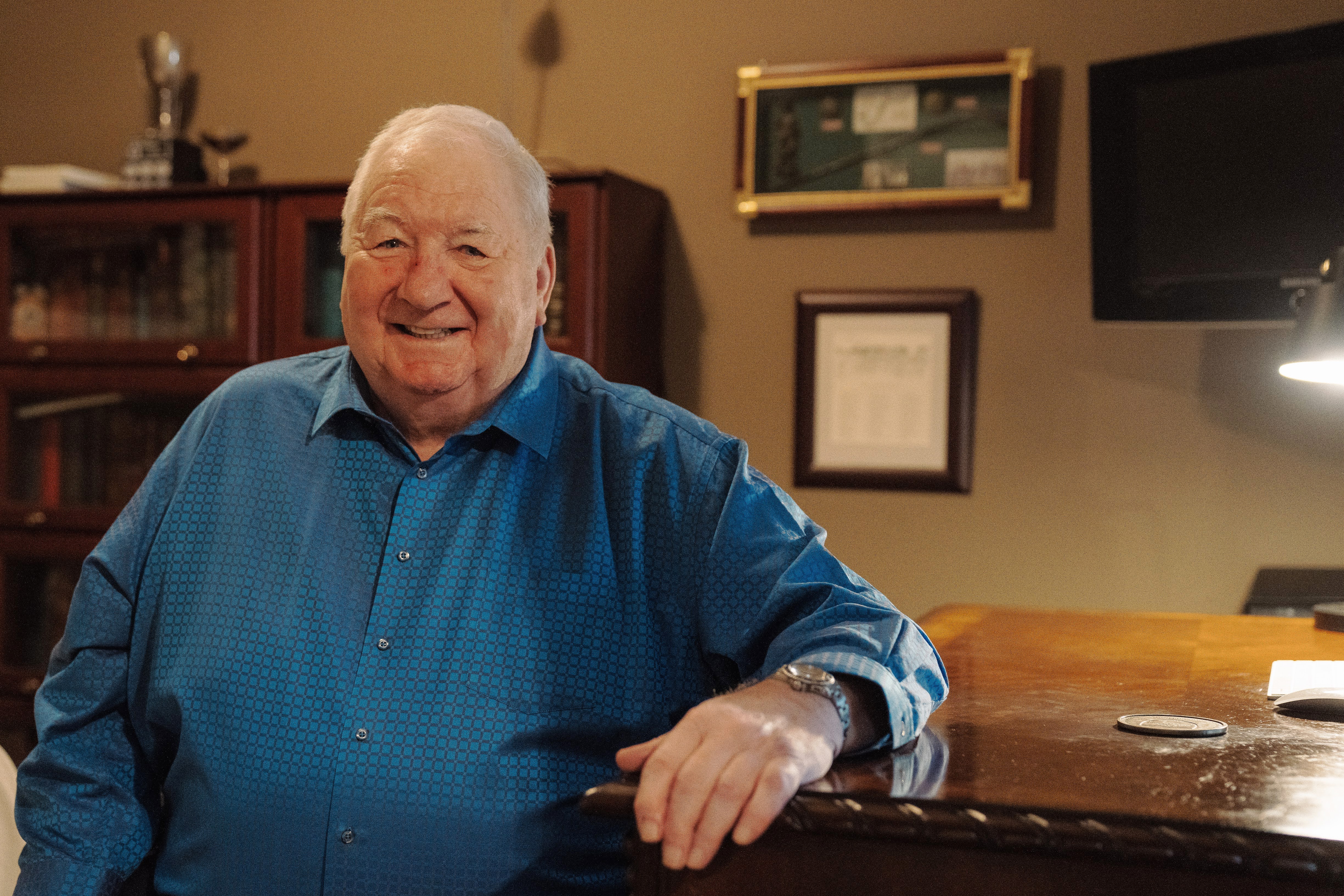
People occasionally compare groundbreaking discoveries to science-fiction, but ideas have to start somewhere. This particular idea can trace its roots to the UK when Dr. Robert Lindsay first found himself fascinated with extracorporeal circulation—where blood is taken from an individual, processed and returned to them.
Despite being labelled a life-saving treatment, the mortality rate of people undergoing conventional dialysis is staggering. Approximately 60 per cent of patients who start dialysis pass away in five years. But according to Dr. Lindsay, Professor Emeritus at Western University and nephrologist at London Health Sciences Centre (LHSC), it’s not dialysis in and of itself that’s the problem, it’s the intermittency of treatment.
“When I first came to London, we were dialyzing patients twice a week,” he says. “Now we’re at three times a week and that’s anything but ideal.”
Dr. Lindsay explains time and frequency are key elements toward improving longevity. Because of the amount of fluid and toxins that build up between treatments, a strain is placed on the heart. Trying to aggressively remove these during dialysis can, in fact, cause heart and organ injury. Together, these processes will, over time, lead to cardiovascular disease, organ disease and an early death.
This led Dr. Lindsay, in the early 2000s, to run a study involving three groups of patients. One group received daily dialysis for about two hours per treatment. Another underwent slow gentle dialysis for six to eight hours every night while sleeping. Each patient in these two experimental groups was matched to another patient receiving conventional dialysis treatment, only three times a week. Results of The London Daily/Nocturnal Dialysis Study suggested more frequent treatments with improved fluid balance would provide better outcomes and overall quality of life.
Since being confirmed, these results have led to daily and nocturnal dialysis becoming OHIP-funded treatments widely used by patients dialyzing at home. However, less than 10% of hemodialysis patients in Canada are dialyzing at home. How then, Dr. Lindsay wondered, could we improve the lives of those still getting conventional dialysis?
Thus came the idea for a wearable artificial kidney (WAK): a vest with a built-in device designed to remove fluid and some toxins via slow continuous ultrafiltration (SCUF), to be used on non-dialysis days. The SCUF-WAK could be used while carrying out daily activities, all the while increasing toxin removal, preventing the build-up of fluid and eliminating the need for aggressive fluid removal during treatment. In some patients it could even reduce the number of weekly treatments.
But Dr. Lindsay and his team needed funding. A combination of grant money and awards got them started until something unexpected happened.
“London Health Sciences Foundation sent me a letter to say there was a patient of mine who had made a generous donation,” Dr. Lindsay says, appreciation wrapped around every word. “They wanted me to know how important they thought our work here was. It was unbelievable. I’m still so thankful.”
Dr. Lindsay’s wearable system has also caught the eye of Dr. Chris McIntyre, director of the Kidney Clinical Research Unit (KCRU) at LHSC, and Lawson’s 2020 Scientist of the Year. His ongoing mission to improve hemodialysis includes the WAK for several upcoming studies and projects. A clinical trial for the SCUF-WAK vest is set to begin soon.
The fires of thought are driving Dr. Lindsay and the entire KCRU team forward. Innovative research and collaboration have been essential to maintaining their reputation as leaders in the field. For now, we stand on the cusp of a revolution in care for people requiring dialysis, where new ideas are already cresting the horizon.